Trips like this are the kind of trips that I get excited about. There is no fixed schedule, but a trip that is more in the spirit of discovering new areas, listening to, and following what nature is giving you. Unexpected events like finding the Independence make the trip even more special and memorable.
We left Cabo San Lucas on the 16th of July at 21:30. After cruising on smooth seas, I woke up early at a calm yet deeply-breathing Pacific. We were headed towards Margarita Island in the south part of Magdalena Bay.
We passed over different seamounts with different coordinates. During the day the shallowest we found was Potato Bank at around 100 meters (328 feet). The site was full of life: birds, common and spotted dolphins, sea lions, and even sharks at the surface.
Day 1 – 17th of July
We just finished a checkout dive at Punta Tosca Inside at 6-13 meters (20-43 feet) of depth. The 15°C (59°F) water woke us all up. A few sea lions came to visit us; the Garibaldi were around, which meant cold water. There were also a lot of horn sharks, guitarfish, and small Cortez stingrays. We ended the dive with a massive school of sardines in millions, with sizes of 6-10 cm (2-4 in) long.
In the evening we went in search of the submarine Seawolf, which sank 100 years ago. I had two coordinates courtesy of my friend Thomas. We got a hit at the place where I believed it would be. Success!
Day 2 – 18th of July
The next morning, when Captain Gordon told me from the bridge that we had passed over the submarine, I tossed a buoy with a weight belt from the stern. Then, I went out on the skiff to pre-dive it so that it was set. I went down to the sand bottom at 15 meters (49 feet). The visibility was limited to 5-6 meters (16-20 feet), but I saw a shadow slightly more north of where the weight had landed. I swam another 25 meters (82 feet) and found it. It was surprisingly intact for having been there for 100 years and 4 months.
Diving the Seawolf
I would say it was cute! It was so small (45 meters / 148 feet) and so narrow. It was a twin-propelled submarine and resting on its port side. Moray eels were all over the place. There were Cortez angelfish (even a Clarion angelfish), creolefish that were oversized like many of the other fish, huge triggerfishes, spiny lobsters, slipper lobsters, and octopuses.
We did a second dive, where the viz was even more reduced. Nevertheless, it was still very interesting to figure out the u-boat and observe the marine life that has adopted it as their home. It was well-covered with sponges and both yellow and red sea fans.
On the third dive we dove Punta Tosca Outside, by a wash rock close to a massive extended sea lion colony of around 2,000 individuals, perhaps more. Yet, only a few checked us out; most of them chose to stay away. Close to the rock, the life was very rich with Cortez surgeonfish in schools, so much bigger than I have ever seen in the Sea of Cortez. Schools of sardines and gatherings of pufferfish in holes were extremely concentrated as they were all trying to take shelter from the surge. We also saw rays and guitarfishes. It was an okay dive for me, but others enjoyed it better than I did.
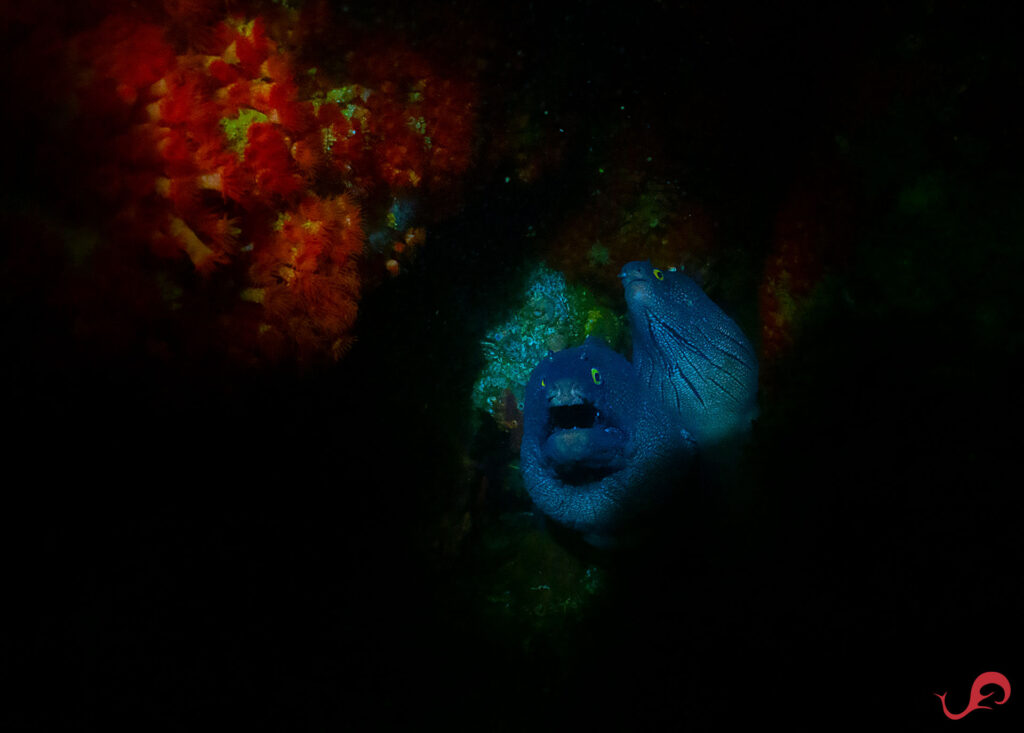
Day 3 – 19th of July
When Captain Gordon was searching around Potato Bank and 66 Fathoms Bank, he found the shallowest to be around 100 meters (328 feet). So, instead of staying there as it was far away from Magdalena Bay, we tried close to Pinnacle Bank, with the shallowest sounding at 112 meters (367 feet). We chummed for 2 hours, but had no luck except for some sea lions checking us out.
As we were steaming towards Isla Margarita, we found a bunch of marlins. We decided to launch the skiffs and had multiple flybys from them. We realized that if we followed their dorsal fin and tail sticking up and out of the water, driving parallel to them, and dropping the snorkelers a bit ahead of them, we had successful results.
In the same area we found a fisherman’s buoy tied up at 100 meters (328 feet). We marked it for next time as there were a lot of marlins and sea lions around this spot.
Finding the wreck of the Independence
We continued with a couple of dives at Punta Tosca Outside and the last boiler at the point of Punta Tosca. The place looked a bit wild and scary, but there were lots of fish and fun topography of rock channels with sand in between. Upon reaching Punta Tosca Inside, we found what I was wishing for: the wreck of the 65-meter (211-foot) sidewheel steamer Independence that sunk 1853.
The fun part was that I didn’t know it was there, but had read that it sank close to Punta Tosca when the captain mistook a wash rock for whales… it ran aground, then the ship caught fire. Over 150 souls were lost. I just remembered what I had read before the dive and mentioned it when I was looking at a rock that was getting washed over like a breaching whale… Could it be that rock? And it was! We saw a few metal frames first, and then more metal. Looking ahead, what I thought were some big pinnacles turned out to be four huge boilers, with approximately 3-4.5 meters (10-15 feet) in diameter, from the Independence.
Diving the Independence: The Best Dive of this Trip
There were loads of fish life in this graveyard—sardines packed in a big bowl, big groupers, and playful sea lions that came playing with us around the boilers. Being there was a special feeling, maybe because of the gruesome story behind what happened on the Independence, or that we actually found it just by having read about it in an old news article. It could also be due to all the amazing marine life that had gathered here since it lay down here 167 years ago. I just wish we had time to dive it again! It was the best visibility (around 12 meters / 39 feet) and the best dive of this trip so far!
It was a top day.
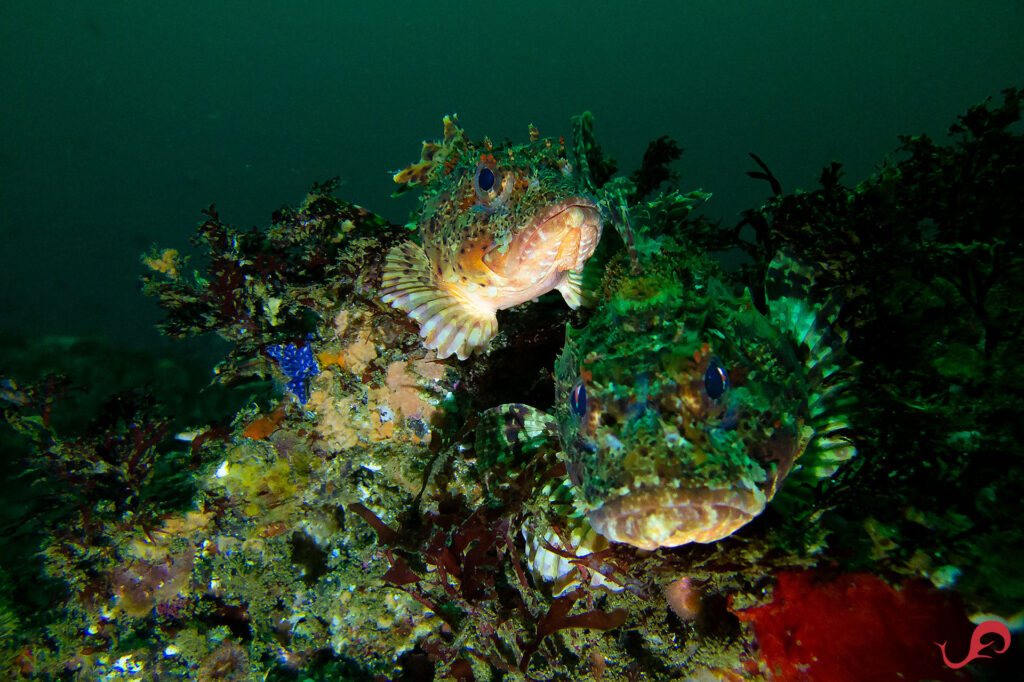
Day 4 – 20th of July
The day before I met some abalone divers from Isla Margarita, whom I asked about what I could find in Isla Magdalena.
“Allá solo encuentras maricones!” shouted one of the hook divers with a laugh.
“Ah, great! I’ll be up there, so I’ll look for them!” I quipped, which made him laugh even more.
So there we were, anchored in the Bay of Santa Maria. The water looked like coffee… probably due to the ebb that brought the water out from the neighboring mangroves. (It’s better when the flood turns the water back in and fills it with clear, open-ocean water.) The area was beautiful — high desert mountains and the ocean boiling with life. Pelicans, boobies and seagulls were attacking the baitballs in the water, while the frigate birds were patrolling a bit higher, getting ready to steal the fish that the other birds have caught. That’s the frigate birds’ profession: stealing food from the fishing birds by harassing them, either pulling on their tail feathers or grabbing their throat with their hooked beak until the pelican or the booby pukes up its catch. Oftentimes the frigate grabs its catch before it lands in the water.
Looking for dive sites around Isla Magdalena
There were lots of fish and sardines around the island. I found a wash rock on the outside of Magdalena Island. The dive was surfy and shallow, with a maximum depth of 10 meters (33 feet). Underwater there was a mix of sand eel grass, rocks, and 1-1.5 meter (3-5 foot) long stubby palm kelp. There was fish, but the place was not wild with it.
We did a second dive at the north entrance of Santa Maria Bay, where a ridge came up to 8 meters (26 feet) from 25 meters (82 feet). We dropped a buoy from the stern. Down to 14 meters (46 feet) it was pea soup, but underneath up to our max of 20 meters (66 feet) it was pretty clear… and cold (15°C / 59°F). It looked like the right place, but surprisingly there was a small amount of fish life and there were no sea lions.
We looked further up north for other dive sites, but the places were shallow, the water looked like milk, and the locations were way off the island. I was thinking of what the abalone diver said: “In Isla Magdalena you only find maricones!” Maybe he meant that there was not much to find.
Meeting a Megapod of Dolphins
We headed north towards the much-talked-about Thetis Bank. We didn’t get far until our vessel was met by a megapod of common dolphins. When I say megapod, I mean that the size of this group was hard to estimate; but easily over 2,000 dolphins, maybe around 3,000.
People go crazy over dolphins. Everyone wants to snorkel with them; it’s just that common dolphins like to do their own thing. They would check out the boat a little, maybe do a bit of surfing, and then that would be enough. It was the same with these guys. Needless to say, it was impressive to see the ocean roiling of them and driving alongside them in the skiff. When we jumped in to the water, we heard their chitter-chatter and even saw some of them, but not a lot. The visibility from Magdalena Island was still making the water milky. Nevertheless, what a treat to encounter them as not many have been gifted to see these megapods.
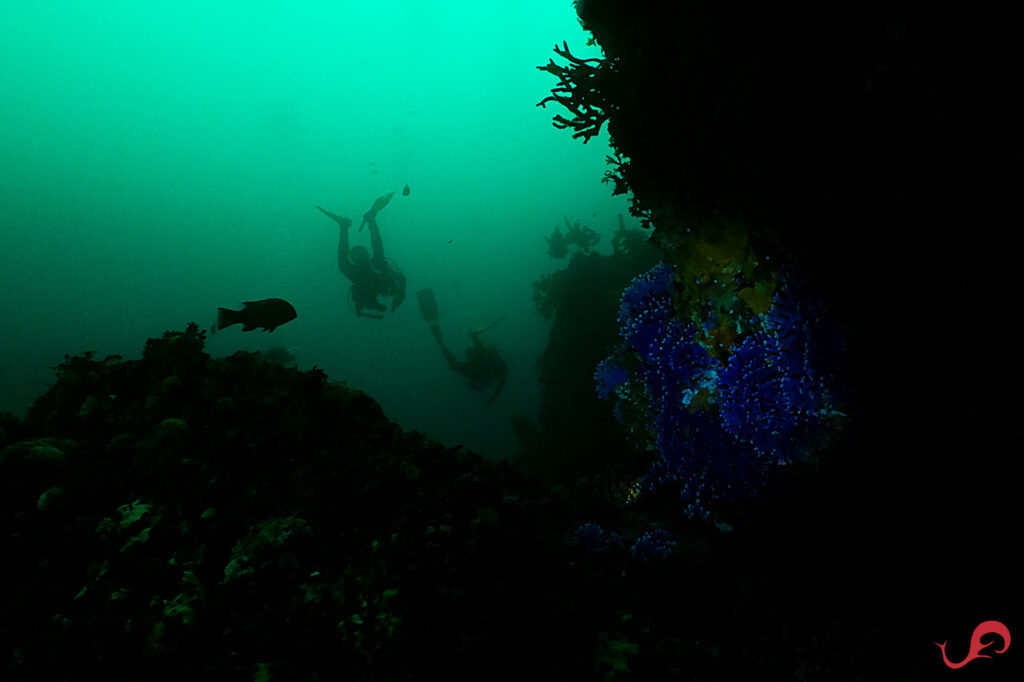
Finding Thetis Bank
About 32 kilometers (20 miles) northwest of Magdalena island we saw fishing pangas (fiberglass skiffs). When you look at the sea charts for seamounts, 90% are not where they are indicated… I don’t know why. We needed to investigate and search some more; we did so by using the sea charts and the position of the pangas as reference.
The depth sounder showed 100 meters (328 feet), then 87 meters (285 feet), then 65 meters (213 feet), and then 44 meters (144 feet)! Surely the pangas are anchored even shallower! According to our research, the highest point was at 32 meters (105 feet). This time we didn’t have the time so we had to leave; we marked it for next time so that we could come back here to chum and dive.
Up to this point (this was our first time to spend some time in this area), we had found two (2) historical wrecks and a bunch of dive sites that are worth the most to return to in Isla Margarita: Potato Bank that sits in deep waters, but has a lot of life; the bank that I now call Marlin Bank; and finally, Thetis Bank. It would help us a lot for next time. And I could stay here exploring for weeks!
Day 5 – 21st of July
Orcas and a megapod of common dolphins at another newfound seamount
We had 300-something nautical miles to go from Magdalena Island to our next destination. Day 5 would be spent at sea. We were lucky to come across another seamount at 44 meters (144 feet) that was full of life. We first spotted 5 orcas, which included a male and a mother-and-calf. Then, we saw that there were more in the area. They led us to a megapod of 3,000-5,000 common dolphins. The ocean looked like it was boiling with waste material. This pod guided us to some local pangas that were way out here, fishing at a seamount that showed up on our depth sounder at 44 meters (144 feet).
From talking to the pangueros, we learned that they had had a whale shark swimming around them while they were fishing. These brave fishermen were out here at 30-40 nautical miles out in an open panga. If you go this far, there must be a reason to be here… Our skiff was launched for the orcas, but they showed little interest in our skiffs and headed on north faster than we could follow them. Others were, unfortunately, interested in the same place as us. A helicopter passed overhead and a tuna fishing boat turned up, with a powerful barge assisting it by pulling out this monster net from the mother vessel, moving in a circular pattern and slowly tightening the net until it was back at the mother boat.
The area had a lot of fish life that brought in tuna and dolphins, as well the sea lions that brought in the orcas.
Practicing our orca and shark identification
There are three (3) different groups of orcas: the residents, which you see more commonly in BC and Alaska, and live on salmon and herring; down here in Baja, you find the transients and the offshore more often. The Transients prey more on seals, sea lions and the baby gray and humpbacks. The offshore are more interested in sharks and mobulas, and even mantas. It is hard to say if we saw a transient or an offshore group… They say that the teeth of the offshore orcas are more worn down because of biting through the rough skin of the sharks. We were not able to get that close, so I couldn’t tell… Sharks were also spotted at the surface, but I wasn’t sure which kind. (I guess it was mako.)
The weather was a bit choppier, but decent. You could say that the hot days were over.
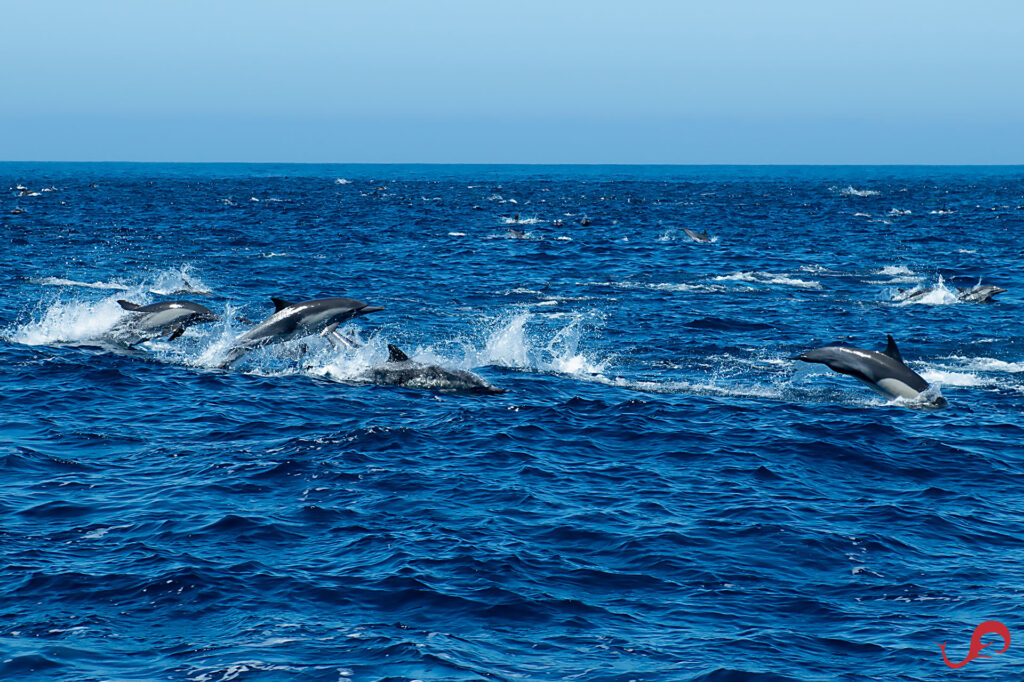
Day 6 – 22nd of July
We got to sleep in for one hour today! The watch was set back by one hour when we reached Baja California. We woke up in the same timezone, so we had the chance to properly log the coordinates that we had been jotting down on pieces of paper. Things often get forgotten quickly if you don’t do it immediately. And I was saving these coordinates to improve this itinerary. It’s like a puzzle, you get a piece at the time. You memorize it, write it down, and little by little, you start to see a pattern… Getting a clearer picture helps to improve the possibility of finding animals.
Sacramento Reef (There’s Gold?!) and friendly dolphins
The morning was gray and a bit windy. It was pretty chilly. It wasn’t until the afternoon when we got to Sacramento Reef until the afternoon. We approached from the south, carefully sounding and watching. We anchored close to a kelp bed at 18 meters (59 feet). When we saw a few fishing boats diving for uni (sea urchins), I headed over to them to have a chat. Locals are the best source of information and I normally enjoy my exchanges with them.
The one whom I talked to first asked me, “What kind of gear do you have?! I found a gold bar here and need some help!”
“Not this time, but I’ll be back!” I answered regretfully.
The wreck that interested me was the 82-meter (270-foot) wheel steamer Sacramento that went aground in 1870 with around USD 1.5 million dollars’ worth of gold. However, the fishermen warned me that it was on the reef and dangerous because of the surge. I dove the 2 dives and also dove in between, but I didn’t find any signs of a wreck… Sacramento Reef is huge with a lot of areas to search. It was a great site with lots of fish, huge sheepheads and anemones, sponges and nudibranchs.
On our way back to the mother boat, we had company from Pacific white-sided dolphins that didn’t want to leave us, so we snorkeled with them for over an half an hour. I want to come back here as 2 dives are not enough. I would like to reconnect with the local urchin divers to learn more about this place.
Roca Ben and a huge black seabass at Six and a Half Fathom. Top dives!
I have never dove Six and a Half Fathom, but I have done Roca Ben won a huge surge around 10 years ago. The top of 6.5 Fathom is at 12 meters (39 feet), and the first 10 meters (33 feet) had low viz. Underneath it was clear, with about 20-meter (66-foot) visibility at a depth of 30 meters (98 feet). The site was full of sponges and anemones, and there were fish everywhere—rockfish and some that looked similar to an Irish Lord. Yellowfin jacks and bonitos were hunting, while big 2-meter (6-foot) black seabass were hanging around. They were monsters and reminded me of the Goliath groupers. There were big boulders and swim-throughs.
These two seamounts south of Isla San Martin were top, top dive sites! At the surface we saw a lonely baby Pacific white-sided dolphin, less than a meter (3 feet) long, without its mother. Poor one! I didn’t know how he would survive out here.
Roca Ben was our last dive, with its top at 5.5 meters (18 feet). It was so much more pleasant to dive compared to the surge-y dive I did last time I was here. The colorful pinnacles reminded me a lot of British Columbia. It’s not only in the tropics where you can see colors… I could stay here for an hour, just looking at all the life on the rocks.
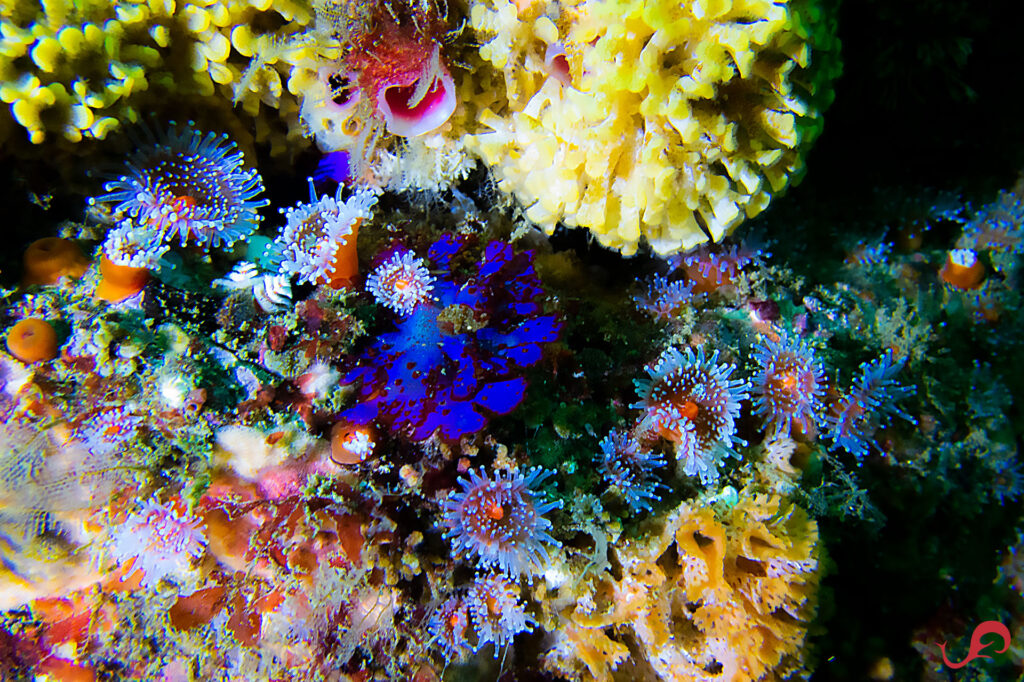
The end
The trip is over. Now the fatigue sets in, which happens when you suddenly relax after all the searching, pre-diving, investigating, thinking, sounding, and mapping. It was a very rewarding trip and I was able to mark out some new spots. I just love exploring and having the time to look for new spots, very often using helpful information from the local fishermen who possess so much knowledge that has been passed down for generations.
We found two historical wrecks, the submarine Seawolf and the Independence. We are still looking for Sacramento wreck and 3 seamounts that we can rediscover in the future, plus a bunch of new dive sites. There is also a spot for striped marlin that I’d like to visit during the season. I hope I can come back here on one of the smaller boats of the Nautilus fleet so that I can expand my knowledge of this area, as well as do a bit more diving in the mangroves in Magdalena Bay.


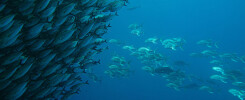
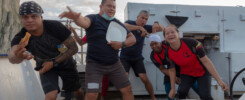
Wow! The excitement continues.
Thank you for the update on this exploratory dive trip.
🤗👍